Burn
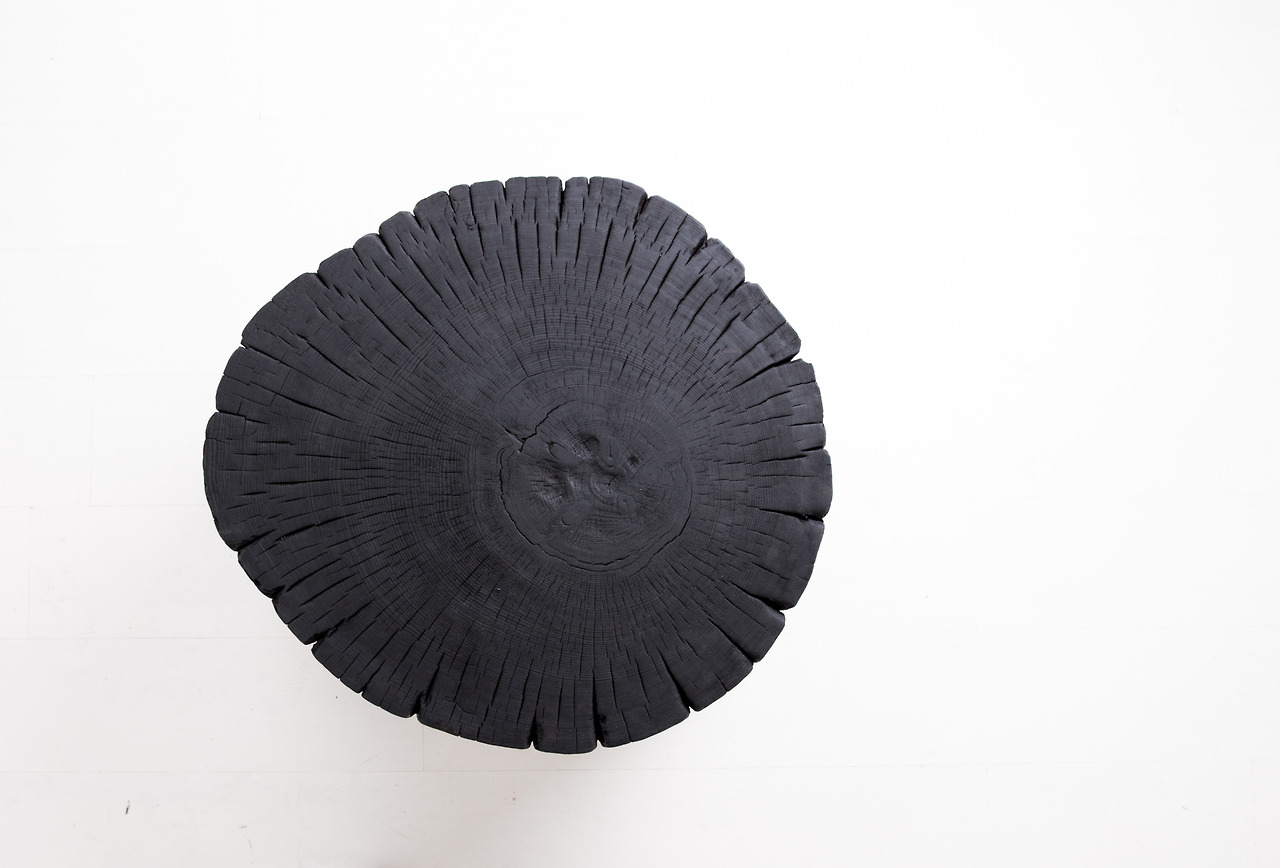
An increasingly popular technique with innovators in the west, Shou-sugi-ban is a Japanese tradition of burning wood siding that has been around for centuries and continues to be a popular tradition in the Okayama Prefecture of Japan.
This method began to be employed when the Japanese discovered that a charred boards used for siding were much more resistant to insects, rot and flames. The Shou-sugi-ban method was originally implemented to reduce fires, but is now primarily used for its aesthetics and improved performance/ limited maintenance in exterior applications. The process involves charring the wood, cooling it and cleaning it. It can then be left completely untouched, heavily or lightly brushed, or can be sealed with a clear coat or a stain.
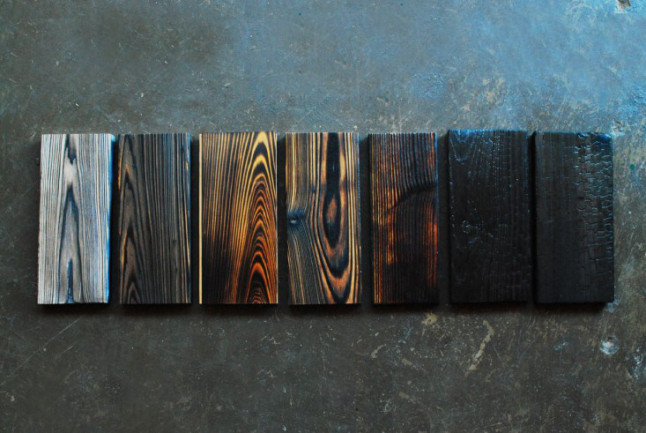
Delta Millworks Shou Sugi Ban finish samples, photo courtesy Remodelista
Traditionally, Sugi – Japanese cedar, was utilized and the Shou-sugi-ban technique was the work of craftsmen on a small scale. With its increasing usage however, architects and designers are using other species of wood like western red cedar, doug fir, cyprus, pine and oak and burning material on a large scale in a factory setting. Depending on the material used, pre-finishing, the level of charring and the intensity of the elements in the installed location, the time frame in which the wood may need to be treated can vary. To maintain the siding from year to year, a light pressure wash can help reduce or eliminate dust and mildew. More heavily charred finishes require less maintenance than the finishes with more natural wood showing through and siding has been known to last as long as 60-80 years.
The charring of the wood brings out the richness of the wood’s grain pattern, can create beautiful color variations and heavily charred wood can take on an almost snake-skin like appearance. Shou-sugi-ban is a simple, natural, way to preserve and ensure the longevity of wood. With the building industry being a heavy contributor to global emissions and pollution; using a non-toxic finish on the largest surface of the home to protect our soil, air, water, and families definitely seems like a step in the right direction.
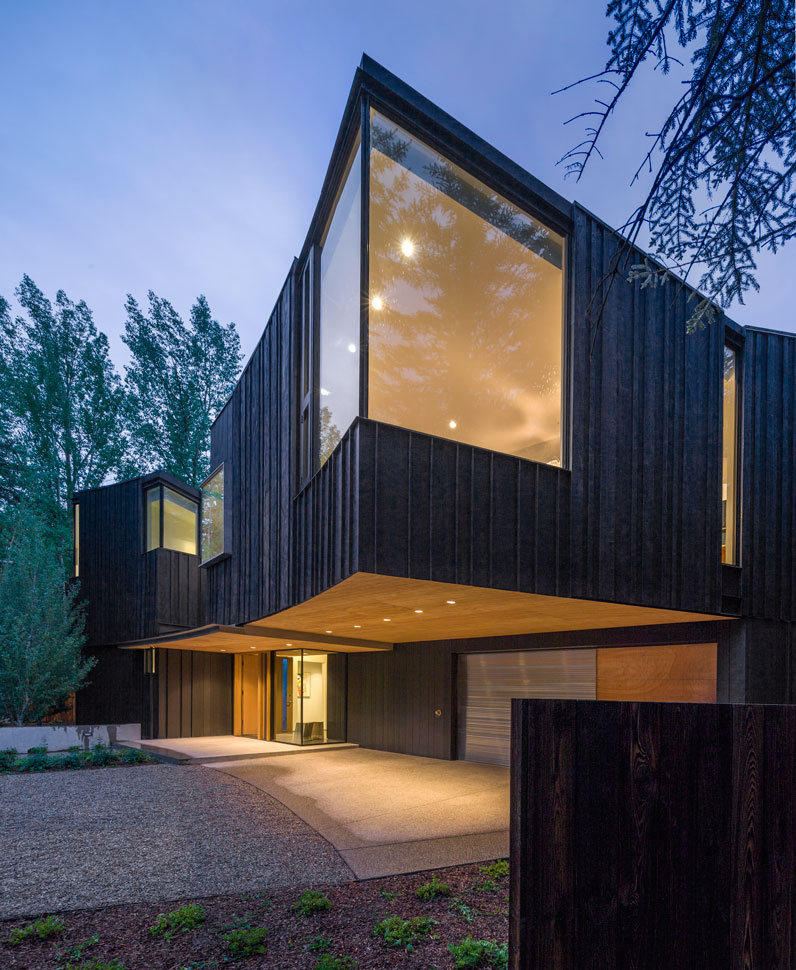
Blackbird House by Will Bruder Architects, photo courtesy Delta Millworks

Sakuma Studio House, photo courtesy Materialicious
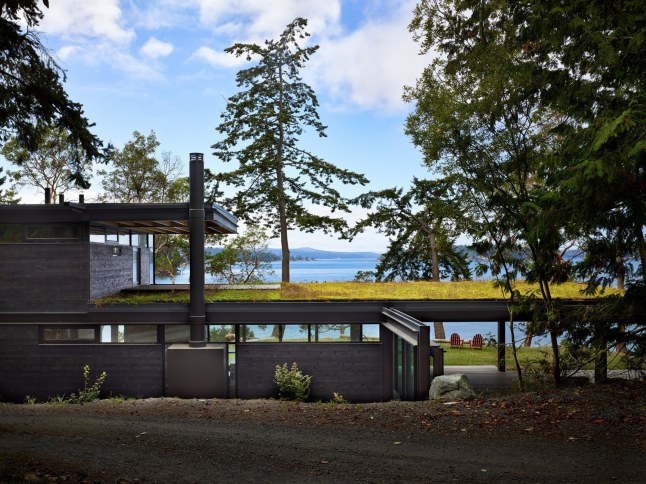
Pole Pass Retreat by Olson Kundig, photo by Jennilee Marigomen

Fairy Treehouse by Malboeuf Bowie Architecture
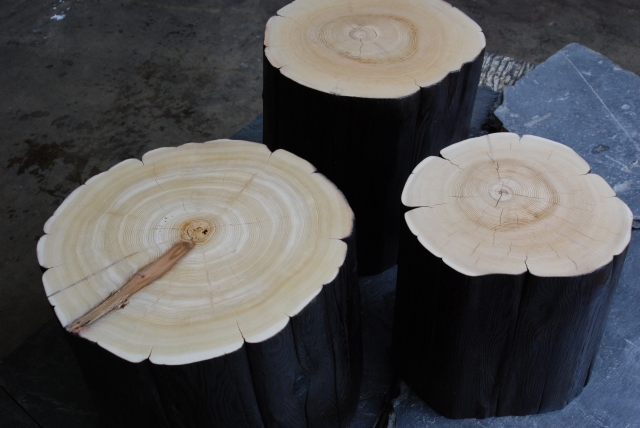
Stump Tables by Take to Heart
Upper image by Uhuru Design
